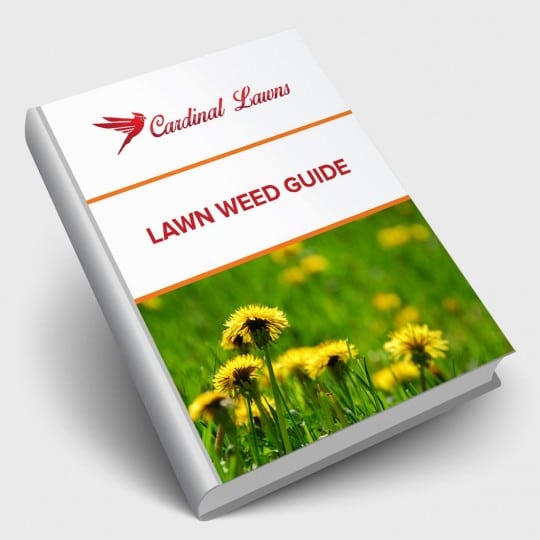What Weeds to Watch This Spring
Plus Prevention & Controlling Methods
Posted
April 14, 2022

Finally! Your grass has started to grow again—but so have the weeds. Now’s the time to control the spread before the growing season is in full swing and it becomes out of control. Follow these spring weed control tips to help get rid of what you don’t want and protect what you do.
Weeds to Watch For
Some weeds are unmistakable—we’re looking at you dandelions—and some blend in with your yard. But if you notice patches or tufts of green that look different than your grass, chances are it’s a weed. Here’s what to look for:
- Broadleaf weeds. Wide, flat leaves that are not needle-like or look like grass. These are most likely dandelions, clovers, ground ivy, oxalis, henbit, and thistle.
- Grassy weeds. These are harder to spot because they look like grass blades. Crabgrass, foxtail, and bluegrass are some of the thinner varieties. Nutsedge, onion, and garlic are similar but more tube-like than flat in shape.
If you see any of these weeds early on, it’s time to take action immediately. However, some weeds (like dandelions and clovers) produce flowers that feed bees, so maybe wait to address these weeds until after other flowers have bloomed.
Spring Weed Control
While it may seem like weeds are in control, there are ways to take back your lawn. There are many weed control products on the market, but they’re not all alike. Some focus on broadleaf weeds, others on grassy weeds. Some also fertilize your grass at the same time. Some come in liquid form, others in granule. Whatever product you choose, make sure it deals with the weeds currently invading your yard.
If you’re one of the lucky ones with just a few weeds popping up, the problem could be solved by hand-weeding. However, this method is only effective if you get to the root of the problem: the root. Simply ripping off the top of the weed will only mean you can’t see it until it inevitably grows back.
Preventing Weeds
One of the best ways to prevent any weeds from growing is to properly maintain your lawn year-round. Lush, healthy grass is less likely to allow weeds to join them. When there are weaker, stressed sections of grass or bare spots on your lawn, this is where weeds will gain a foothold.
You can also be proactive about weed control by applying a pre-emergent product to your lawn in early spring or late fall. This only helps the situation if the weeds haven’t germinated yet. Again, make sure you’re targeting the type of weed you want to prevent on the type of grass you have growing, and always follow product directions.
The best time to apply these preventative products is after the ground has thawed and before it heats up too much. This timing differs from area to area, but if you wait too long, the weeds may already start to germinate.
If you’d like to hold off on applying any chemicals to your lawn, try these weed-preventing practices:
- Dethatch. Remove the top layer of dead grass and debris from your lawn to allow grass and plants to grow more freely.
- Aerate. Give your weak lawn a boost by allowing air, water, and nutrients to reach the roots and support lush growth.
- Mow high. The higher your grass, the more shade it will throw on the soil, denying weeds the sunlight they need.
- Water deeply. Longer drinks of water promote deeper root growth, therefore strengthening your grass.
Professional Spring Weed Control
If you’ve tried many methods of weed control and are still dealing with unwanted weeds, contact Cardinal Lawns for help. Our lawn experts will evaluate the situation and help you come up with a plan to get rid of the weeds this season and prevent them from returning.

Download Your FREE Lawn Weed Guide
Before weeds take over your yard this season, learn to identify and prevent them in the first place. Keep your lawn looking great all year!